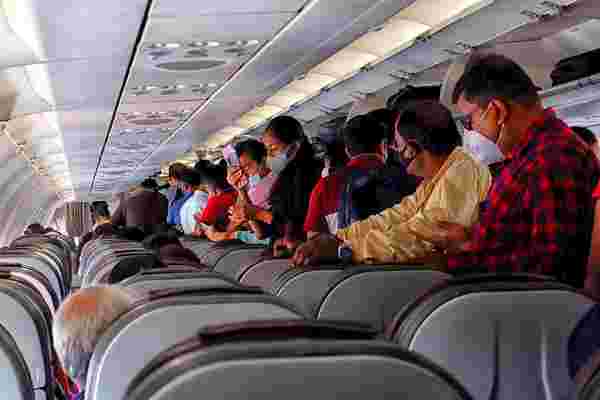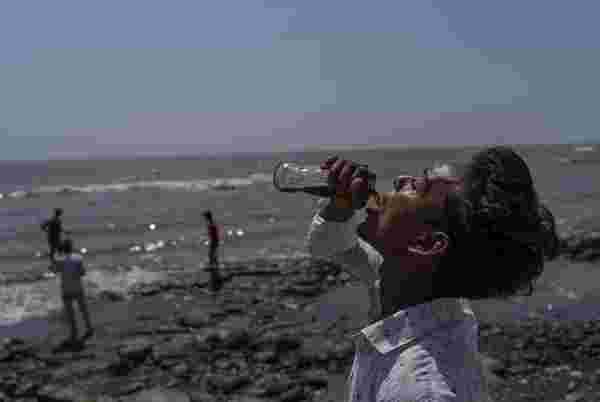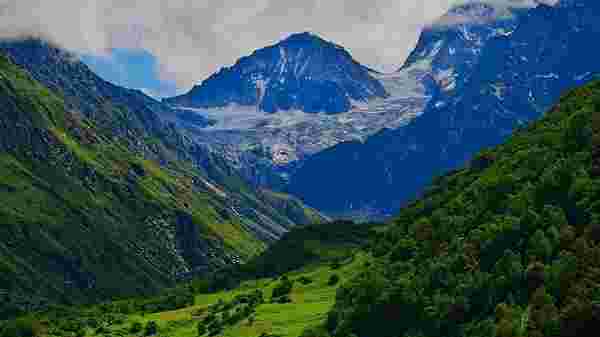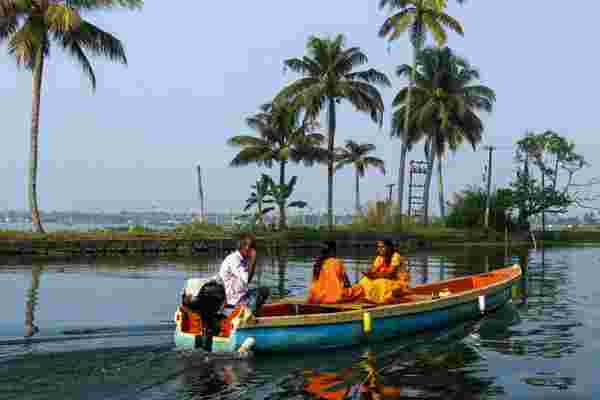India is open again but where should you explore first?
Ready to spice up your life with all the sights, sounds and sensations that India has to offer?
International travel to the popular tourist destination has been back on the cards since the end of March when flights resumed.
Here’s what you need to know to make the most of your Asian adventure, without falling foul of the current travel requirements.
What are India’s travel restrictions?
If you’re fully vaccinated, you must submit a self-declaration form on the online Air Suvidha portal before travelling. By including proof of vaccination, you don’t need to show a negative PCR test result on arrival.
If you’re not fully vaccinated, you need to upload and authenticate a negative PCR test, carried out by a private company, taken in the 72 hours before travelling.
There is no longer a requirement to test on arrival, quarantine or take a PCR test on the eighth day of arrival in India.
Visitors are advised to self-monitor for symptoms for 14 days. You may need to provide contact details and download the Aarogya Setu app (India’s contact tracing and self-assessment digital service).
Random COVID-19 testing is taking place on arrival in airports and all passengers are subject to thermal screening.
Don’t forget that you’ll need a mask for your flight and it must be worn within airports, too.
 Travellers seen standing while waiting for the cabin crew’s instructions at Kolkata International Airport.Avishek Das / SOPA Images/Sipa U via Reuters Connect
Travellers seen standing while waiting for the cabin crew’s instructions at Kolkata International Airport.Avishek Das / SOPA Images/Sipa U via Reuters ConnectDo I need to wear a mask in India?
Some states, including popular tourist destinations, have reintroduced fines for failing to wear a mask in public places, amid concerns about a surge of COVID-19 cases in recent weeks.
Goa, Kerala, Delhi, Tamil Nadu and Uttar Pradesh, home to the Taj Mahal, are among the states that dropped mask-wearing rules, only to reintroduce them within weeks.
What are COVID-19 case numbers in India right now?
Unfortunately COVID-19 is on the rise, with more than 22,200 new cases recorded last week (April 25- to 1 May), up 41 per cent from the previous week.
But there has been no increase in the number of deaths and debate is ongoing about whether the surge in cases should be described as a fourth wave, given that 70 per cent of cases are happening in just three states.
Is it safe to travel in India?
It’s not just COVID-19 that could affect visitors to India.
An unseasonably early heatwave is causing deaths in central and northwestern India, after the hottest March since 1961.
 A boy drinks soda at a promenade on the Arabian Sea coast in Mumbai, India.AP Photo/Rafiq Maqbool
A boy drinks soda at a promenade on the Arabian Sea coast in Mumbai, India.AP Photo/Rafiq MaqboolMore than one million Brits travelled to India in 2019, with most visits being trouble-free, according to UK government advice.
But bear in mind that travellers could be affected by summer monsoons, air pollution in cities, stampedes at busy festivals, terrorist threats at tourist sites and sexual violence against women.
Where are the best places to visit in India?
Once you’re all set to jet off, here are some top spots you’ll love in incredible India.
A Himalayan high for nature lovers
The Valley of Flowers National Park in Uttarakhand is a gorgeous mix of mountains and meadows.
This UNESCO world heritage site first came to the attention of the wider world when it was stumbled upon by three British mountaineers who had lost their way in 1931.
 The Valley of the Flowers National Park in Uttarakhand, India.Getty via Canva
The Valley of the Flowers National Park in Uttarakhand, India.Getty via CanvaBest visited in the Indian summer months (March-June), the park is 3,600m above sea level and is home to more than 600 species of exotic flowers like orchids and anemones, sub-alpine forests, waterfalls and rare wildlife including flying squirrels and snow leopards.
Bungee jumping in Goa: thrill-seekers will love this leap over a lake
Adventure travel is on the rise in India, with rock climbing, paragliding and rafting all proving increasingly popular.
Jumpin Heights, a 55m bungee-jumping platform, gives you amazing views over Mayem lake, in North Goa, about a 45-minute drive from the popular Baga Beach.
A post shared by India’s Highest Bungy (@jumpinheights)
It opened just before the pandemic but its sister site at Rishikesh in Uttarakhand has been established since 2010. 100,000 thrill-seekers have taken the plunge since then so you know you’re in safe hands.
Beaches and backwaters in Kerala: perfect for laid-back travellers looking for lazy days by the water
Kerala is nicknamed God’s own country and for good reason. Its delicate ecosystem is built around lagoons, lakes and backwaters, with five national parks and stunning beaches to relax on.
 Women travel by boat on the backwaters of Alappuzha, Kerala.SEBASTIEN BERGER/AFP
Women travel by boat on the backwaters of Alappuzha, Kerala.SEBASTIEN BERGER/AFPFor the more adventurous, coracle rafting can be the perfect way to take to the water and get closer to wildlife. Also known as bowl boat riding, each round bamboo raft is rowed by a group of four riders, so it doubles up as a fun team sport.
Head to Tamil Nadu for a heady mix of heritage and health
The countdown is on to International Yoga Day, on 21 June this year. Where better than
India to celebrate the day dedicated to looking after your mental and physical wellbeing?
India, a destination that lets your mind seek your soul through its manifold age-old wellness practices such as Yoga and Meditation!
VC: Monica Filip#IDY2022pic.twitter.com/aA1hxVoJtL
— Incredible!ndia (@incredibleindia) May 2, 2022
Retreats across the country are planning special events for the day, but it’ll be hard to beat the stunning backdrop of Gingee Fort and the lush landscape of Tamil Nadu for yogis looking for the perfect spot to practise.
